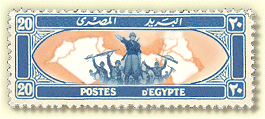

Despite Mussolini's grandiose claims, Italy did not possess the capability to wage effective war. The population was apathetic, there was a severe shortage of strategic raw materials and the Army, woefully lacking in the necessary arms and equipment, was insufficiently prepared in the techniques of modern warfare. Italy's entry into the war the campaign against France from 10 to 25 June 1940 was a humiliating fiasco, partly because strategic planning was centred on the Mediterranean, and the General Staff was caught off balance by the directives for an Alpine campaign. The Army suffered over 4,000 casualties in this brief campaign (the French lost just over 200 men).  A further military setback occurred a few months later when an Italian Army of around 160,000 men invaded Greece from the new territorial acquisition of Albania. Much to the surprise of the Italians and, indeed, to the world in general, the Greek Army repulsed the poorly organised invasion.
A further military setback occurred a few months later when an Italian Army of around 160,000 men invaded Greece from the new territorial acquisition of Albania. Much to the surprise of the Italians and, indeed, to the world in general, the Greek Army repulsed the poorly organised invasion.
East Africa was the scene of further disasters. The Italian Army in East Africa (Africa Orientale Italiana or AOI) was impressive on paper with 88,000 Italian and 200,000 colonial troops but there were many weaknesses. The artillery was antiquated and reserves of equipment, supplies and ammunition were so low that the Viceroy and Commander-in-Chief, the Duke of Aosta estimated that in the event of war he could only hold out for six or seven months at the most. On 1st January 1941 the first British forces invaded Ethiopia and within the space of four months the Duke of Aosta was forced to surrender all his troops to the victorious British. In Libya, Italy suffered another disaster: eight divisions were destroyed and 130,000 men taken prisoner in Wavell's offensive of 1941. The arrival of the Africa Corps in February 1941 prevented a total collapse but after that the Italian Army played a subordinate role in Axis operations. Some 99,000 Italians were captured when the Axis forces surrendered in 1943; the North African campaigns had cost Italy the equivalent of 25 divisions.
|
|
|